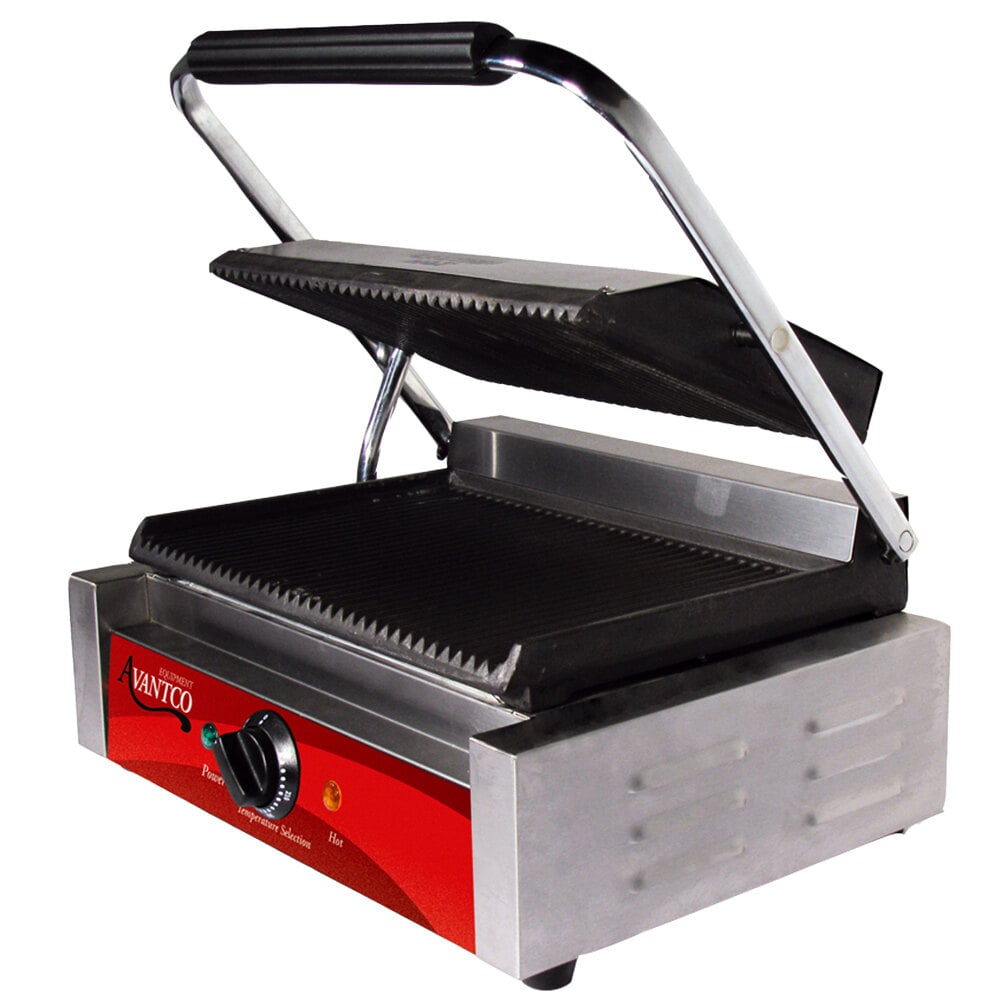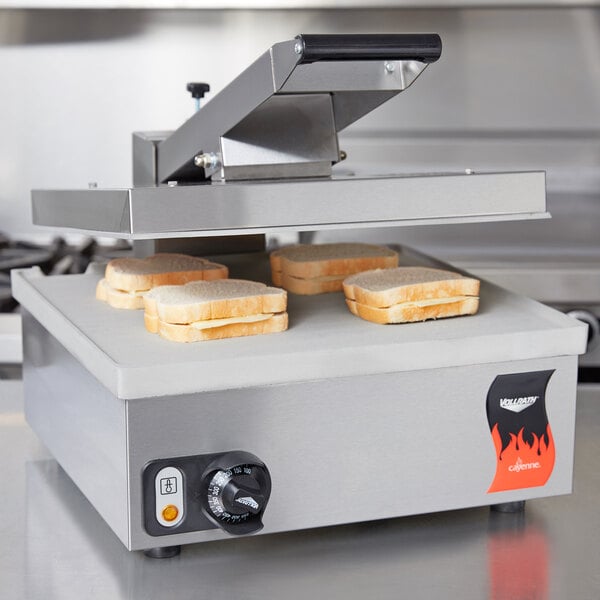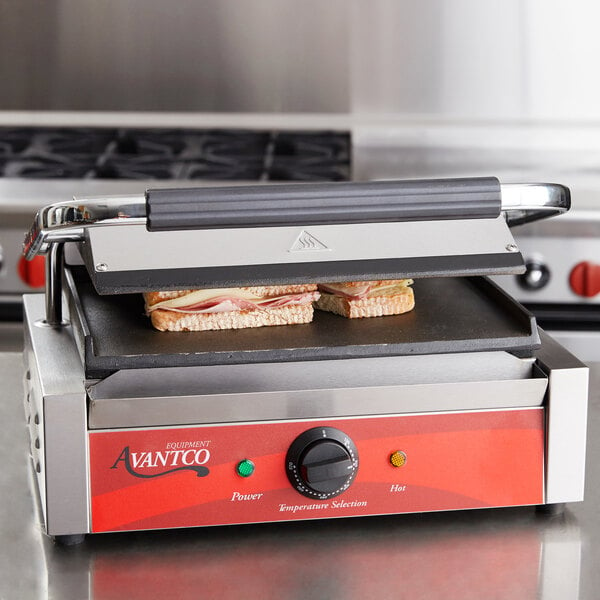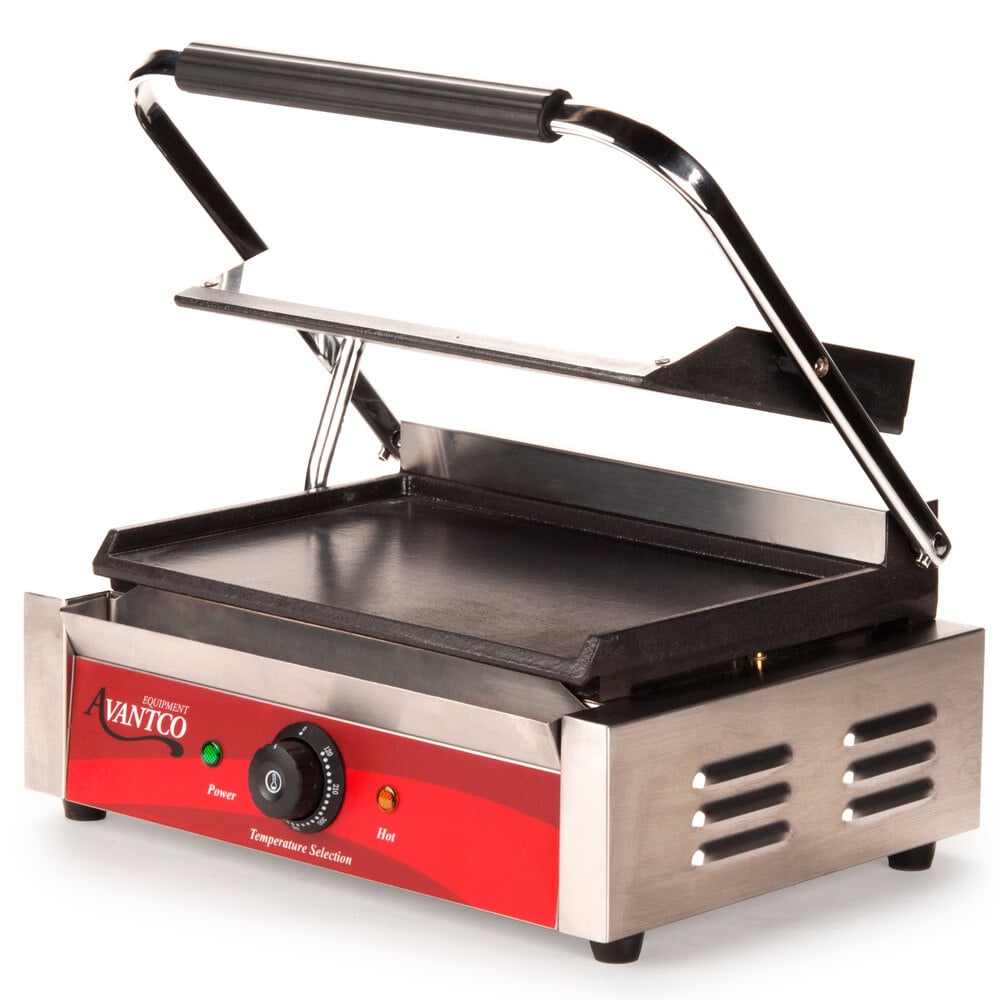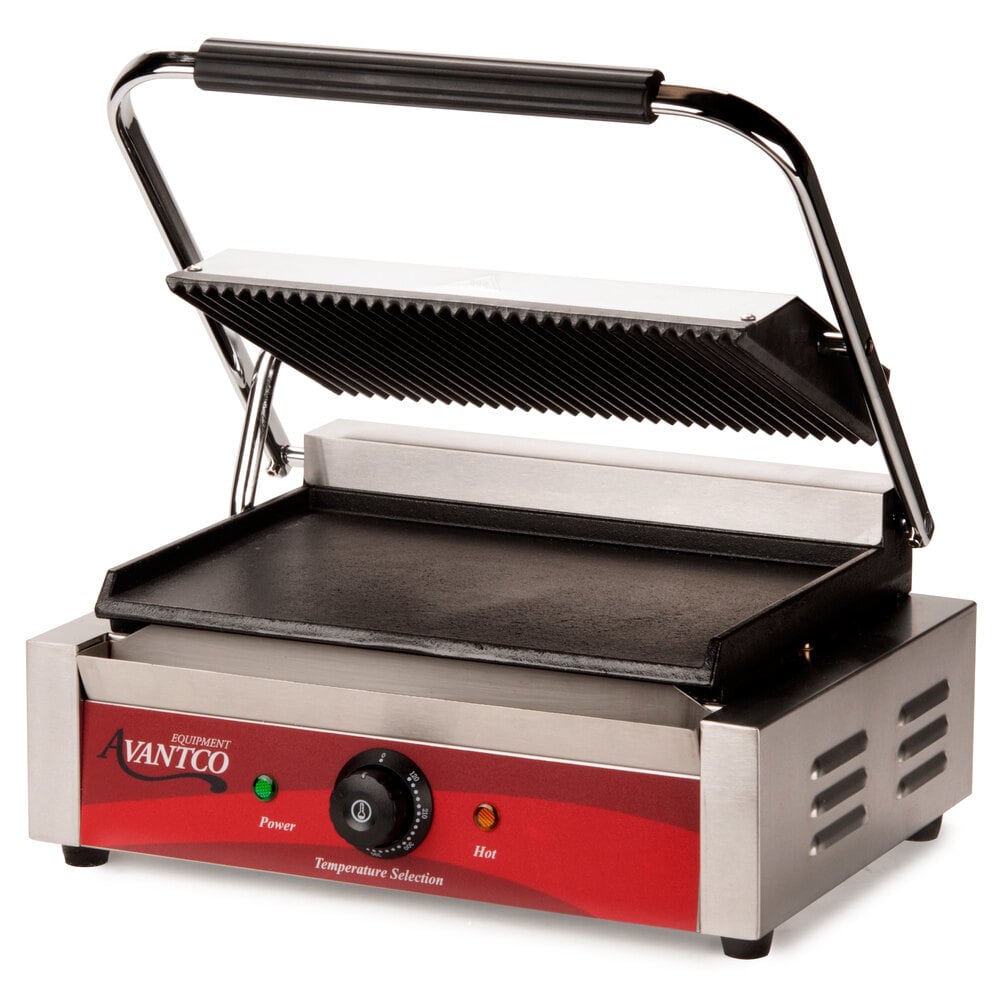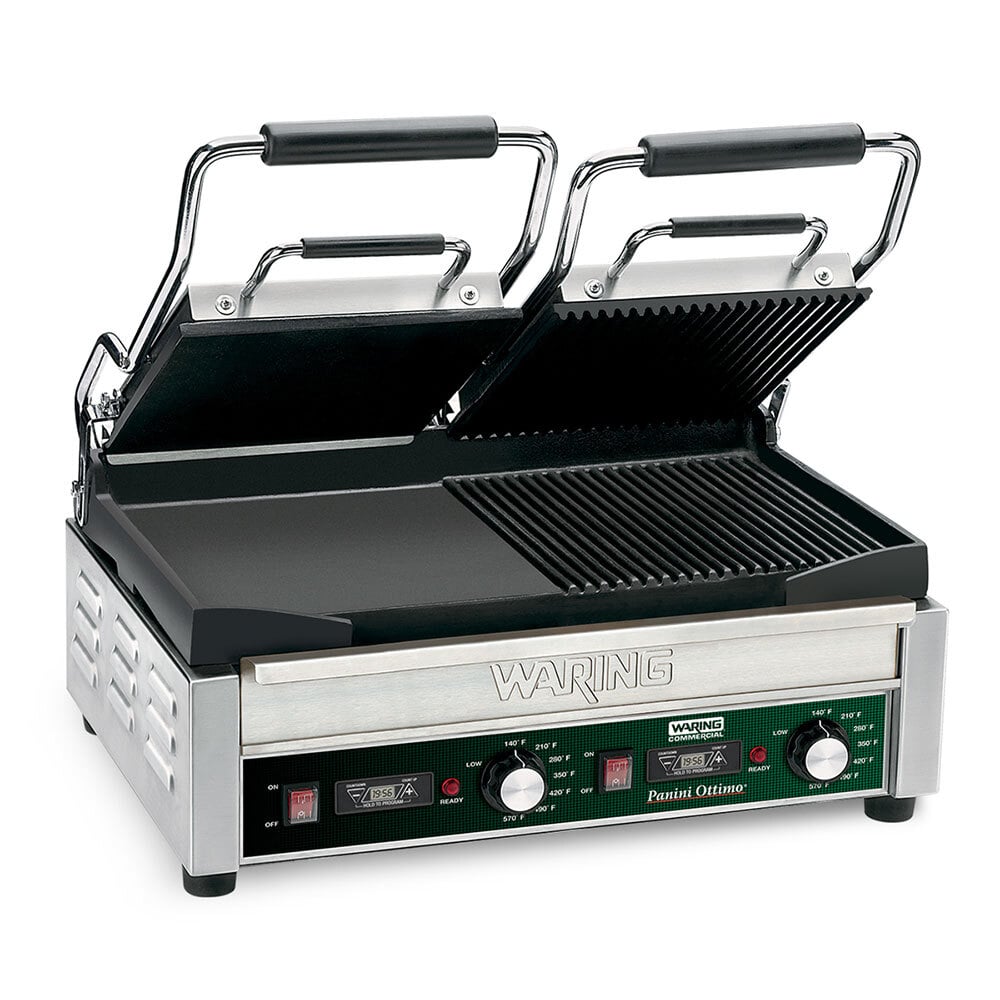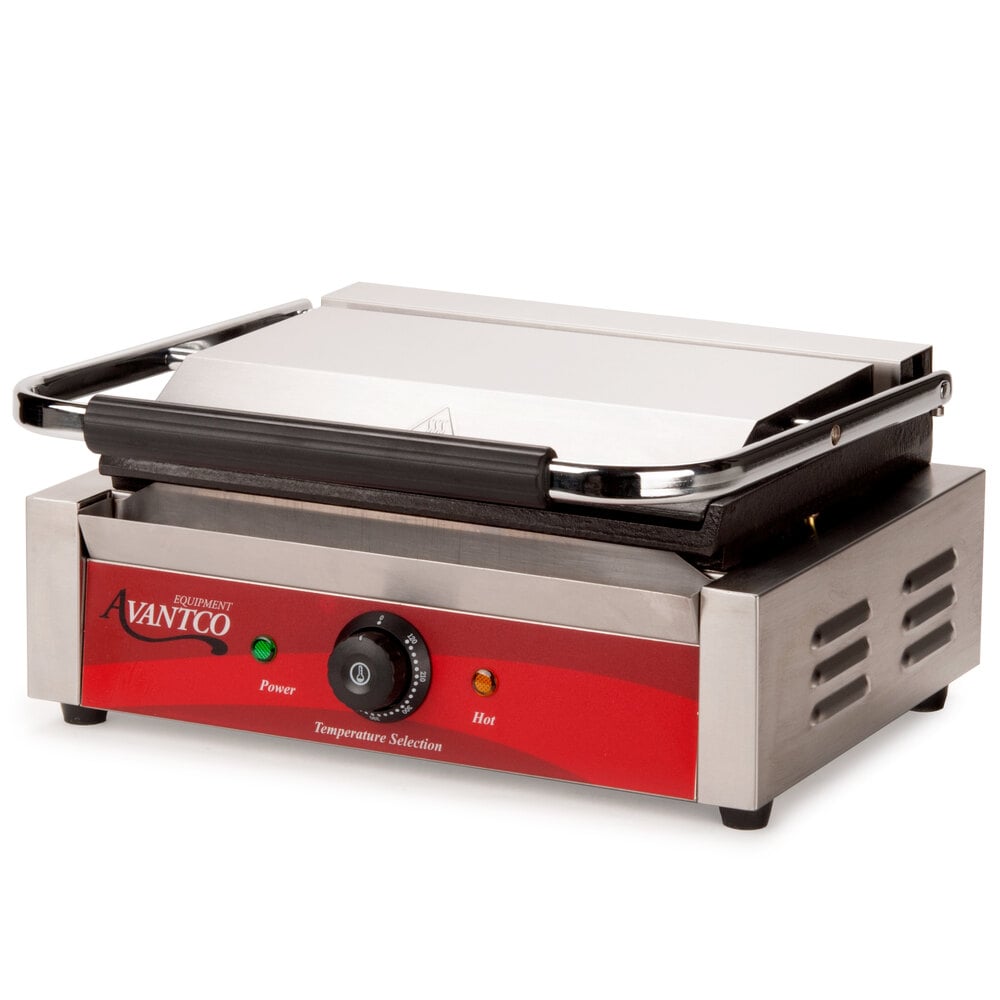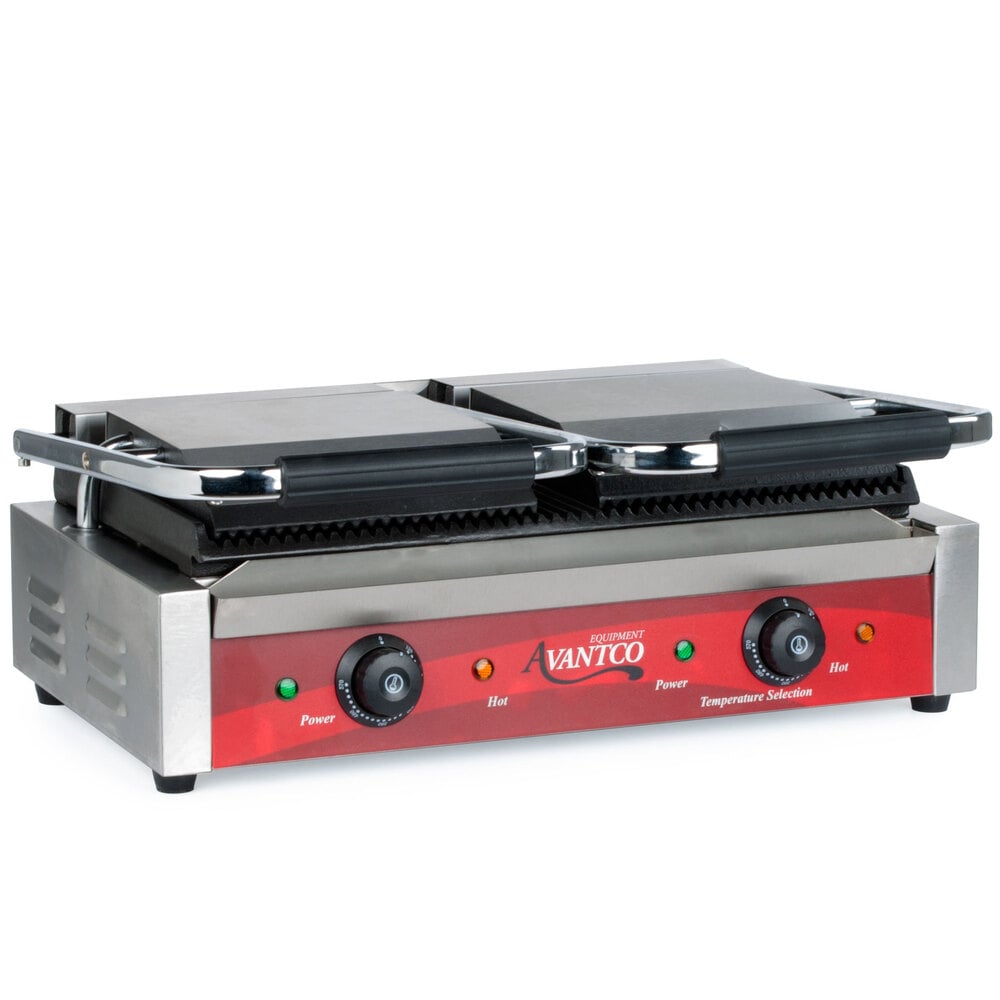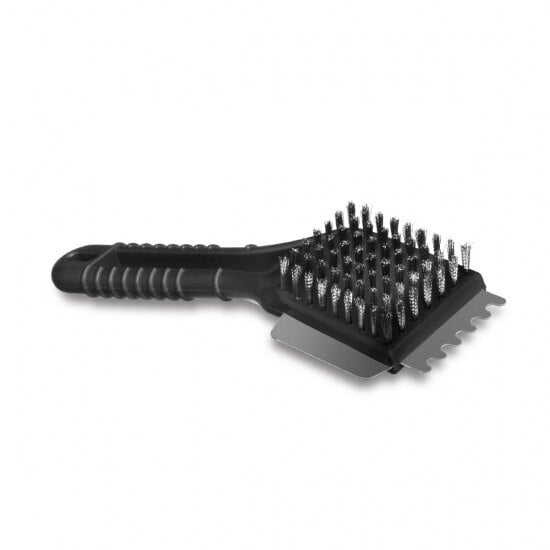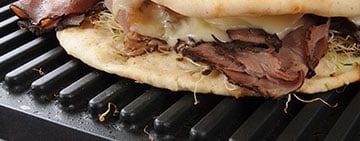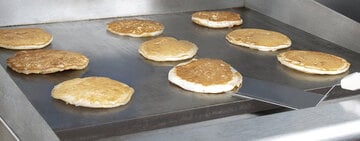The uses of panini presses are as varied as the machines themselves. Wondering how to use a panini press? They are very simple to operate: simply preheat the grill to the desired temperature, place the food on the plate, close the lid, and set the time to your recipe's specifications.
You can use panini presses for sandwiches, grilling small quantities of meat, melting quesadillas, making hash browns, or even grilling vegetables! Each unit is versatile, so the key difference when thinking about application raises this question: medium-duty or heavy-duty? When determining the best panini presses for different applications, it's important to understand:
- Where the panini press will be used in the business (i.e. back or front of the house)
- How often the panini press will be used
- What types of foods you are preparing
For example, if you are a small deli or cafe and will be doing only a few sandwiches a day, the medium-duty panini press will do the job. But, if your specialty is grilled sandwiches and you make dozens per day, a heavy-duty panini press will help you better keep up with orders.
Panini Press Usage
Medium-duty panini presses
are great for intermittent use in a deli, cafe, or sandwich shop. They can handle longer, more frequent use than light-duty models but may not be suitable for applications that rely heavily on a panini machine. For frequent use warming tortillas, grilling sandwiches, or cooking meats, a medium-duty panini press is a good choice.
Heavy-duty panini presses
work well in applications that use a sandwich grill constantly or for a variety of different tasks. Made with more durable hinges and robust bodies, heavy-duty units are designed to stand up to the rigors of a high-volume commercial kitchen. If you need a unit that will produce dozens of sandwiches every day, a heavy-duty model will fit your needs.



